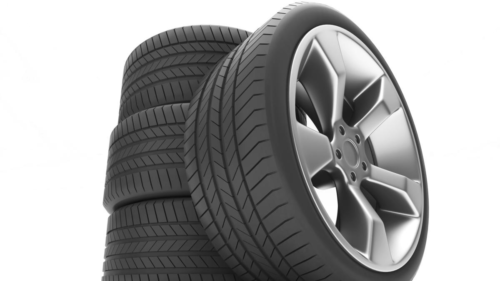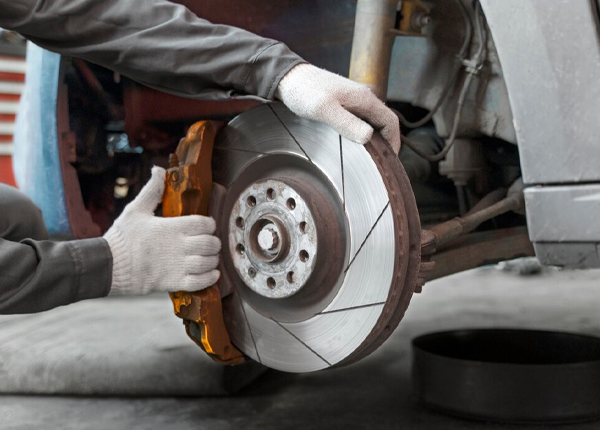How long can you drive with a broken engine mount?
There are so many parts that go into making a car, and the average driver doesn’t think about most of them. For example, do you know how important your engine mounts are? Some people don’t even know what their mounts are or what they do.
Although motor mounts are so critical, you can drive with a broken motor mount for years if you can ignore the loud noises and rattling while driving. As long as the mounts are properly tightened and firmly attached to your frame, there is no immediate need to replace them; however, you should consider changing them as soon as possible to avoid engine damage.
In this guide, I’ll explain exactly what engine mounts are, why they’re so important, how they can break, and how long you can drive with a broken engine mount.
What are engine mounts?
As the name suggests, the engine mount is a series of fasteners that mount your engine to your car’s frame.
Engine mounts isolate engine vibration, reducing overall noise. They also hold your engine to the strong frame of your vehicle.
Vehicles often have a few different engine mounts. At least one is used to hold the engine as I just mentioned, and some are used to attach the engine and transmission.
The mount itself can vary greatly from vehicle to vehicle. Usually it is a threaded rod, a rubber boot to isolate the movement and cushion it, and metal elements that interact with your car. The metal feature usually has a few holes that allow the bolts to go through, holding the motor mount to the frame.
It is important to reiterate that the mount secures your engine to the frame of your vehicle. As you know, the structure of your vehicle is a very strong assembly of metal parts. It’s responsible for keeping your car stiff and strong, even when driving at highway speeds.
Without a strong frame, your car will not be able to move in a straight line and accidents would have a much higher fatality rate.
Since the frame is so strong, it can be used to support the engine block.
The importance of an engine mount
An engine mount is designed to do two things: isolate vibration from the engine, and make sure that the engine is rigidly connected to your car.
As you drive, many small explosions occur inside the engine. Each of these explosions results in a ton of force and vibration.
If your engine was not rigidly connected and vibration isolated, these vibrations can shake your engine and cause serious damage under the hood.
If you look at a motor mount, you’ll get a better idea of how much force is at play. There are big chunks of metal in the mount and a lot of rubber to keep everything running smoothly.
Another side effect of vibration in machinery is that the bolts will start to loosen. In other words, if your engine was able to vibrate as much as it wanted, the bolts in your entire car would come loose, leading to even more problems.
Although an engine mount absorbs vibration and supports the engine block, it also eliminates a lot of noise. One of the big symptoms of a broken engine mount is a loud clunking sound and a slamming door in the front of your car. This happens when your engine is not rigidly connected to your car.
Engine mounts are not serviceable
Engine mounts were designed to be the easiest and most affordable solution to the problems they solve. As a result, there is no way to actually repair them.
Instead, you’ll need to replace the engine mounts when you notice they’re cracked.
My suggestion is to replace all the motor mounts at the same time, even if only one is broken. This will help you avoid running into the same problem in a few months when the next mount gets tired.
Reasons why your engine mount is broken
With such a critical part, you might be wondering why it could break in the first place. After all, motor mounts are relatively simple parts. Well here are some reasons why your motor mount is broken.
Aging
I keep mentioning the amount of force the motor mount has to deal with. Over time, this force takes its toll on mounts.
When your motor mount is in service for approximately 5-7 years, it will show signs of fatigue and aging. At this point, the rubber will have worn down and is no longer useful.
Without the vibration damping rubber, the mount will keep the motor stationary but won’t stop any of the annoying and dangerous vibrations.
weathering
Another culprit could be the outdoors. There are many reasons why I suggest parking inside, and one of them is to protect components like engine mounts from the elements.
In this case, weathering occurs when rain and temperature changes come into contact with the metal and rubber of the engine mount. It can cause corrosion and excessive wear.
If you park your car outside, it’s unlikely you’ll be able to go 7 years before you need to change your mounts.
incorrect installation
Bad news for some DIYers: It’s easy to install motor mounts incorrectly. Although everything seems to be set up and installed correctly, you could run into problems fairly quickly.
In the case of incorrect installation, the supports are not placed in the correct position, which will force them to wear out more quickly. If they are not tightened correctly, they can come loose and cause other damage.
I usually suggest having an honest mechanic handle the install for you.
too many red lines
As your engine revs higher, it vibrates more and creates more power. That being said, your mounts can break prematurely if you drive your car too hard and streak red too often.
The red line refers to getting your car’s rpm close to its maximum before shifting (shown as a red line on your rpm gauge). For any passenger car, there is no reason to change lines. Redlining will only wear out mechanical components faster and can lead to very big and expensive problems.
If you have an automatic car, take it out of “Sport” mode and go easy on the throttle. For manual cars, consider reviewing my manual driving guide to learn the correct revs to shift.
An accident
After being in an accident, there is a lot of hidden damage that can show up after a while. An example of this is your engine mounts. During a collision, the force can shake, dislodge, and lock components in your vehicle.
With your engine mounts, a certain amount of force can cause the rods to bend and the rubber to become damaged. This will cause your mounts to wear out even faster and require replacement sooner.
Leaked liquids in your frame
There is a lot of fluid going around in the engine compartment. While oil or transmission fluid won’t burn the skin, it will break down the raw rubber components.
If you have a fluid leak under the hood and some of it makes its way onto the engine mounts, the rubber can start to break down quickly. As a result, the mount will wear out and stop absorbing vibrations. You’ll notice shaking and loud noises, two sure signs that the rubber is damaged on your mounts.
How long can you drive with a broken engine mount?
Now I will answer the important question: how long can you drive with a broken engine mount? The answer is a bit anticlimactic.
It depends on many factors.
If the rubber on the mounts is shot but they are still firmly attached to your frame, there is no real limit. I had a friend in high school who just ignored his broken engine mounts for the entire two years he drove to school.
He will experience annoying clanking and banging noises from the front of his vehicle, but this usually won’t cause any major problems.
As he drives faster and presses harder on the accelerator, these bumps will be more jarring.
If the mount is torn in a way that the bolts can’t be fully tightened, he’ll want to replace them ASAP. You may only have a few days of driving before something major comes loose and breaks under the hood.
Also, if only one of the five mounts breaks, there’s a chance the other four will take over.
My personal advice is this: replace the motor mounts as soon as possible. It’s not worth the extra risk and discomfort while driving. After all, parts are incredibly cheap, and labor doesn’t take a lot of time.
Shops typically charge anywhere from $200 to $600 to replace a single motor mount. The reason for this is certain factors at play, such as location, difficulty of access, complexity, and cost of the part itself.
Eventual problems with broken engine mounts
Once you notice the signs of a bad motor mount, you can expect some future damage. Later, the extra vibrations can wear out your engine. This added force can cause your engine to misfire and require a rebuild sooner than expected.
Also, the extra vibrations can cause other fasteners to start to loosen. I mentioned earlier that I had a friend in high school who just ignored his broken motor mounts. He came to school one day with a bolt he found under his car, having no idea where it came from.
This is to be expected if you go long enough without replacing your broken mounts.
Conclution
The engine mounts in your vehicle are important parts that reduce vibration, keep your engine in place and result in a more comfortable ride. When they break, you need to replace them as soon as possible. However, you can technically drive with broken motor mounts for years before it becomes critical (although I would strongly suggest against it).



